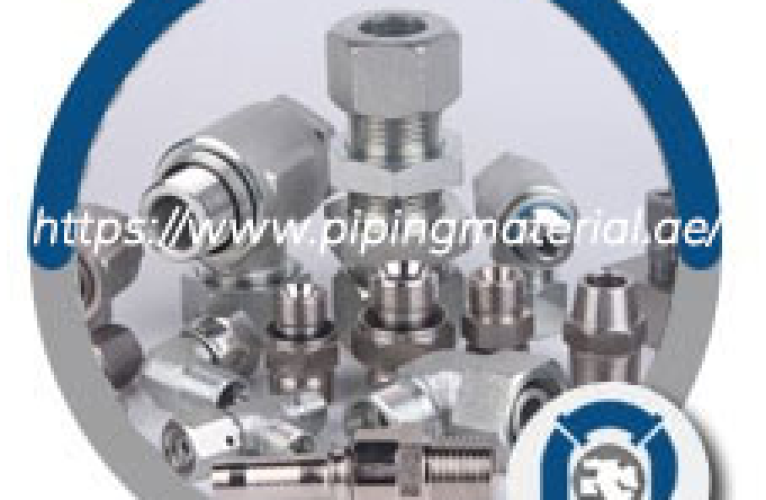
Tube fittings are a crucial component in piping systems that serve to connect, control, or change the direction of fluid flow. They are used in various applications such as water and gas transportation, oil transportation, instrumentation, and HVAC systems. With the increasing demand for efficient and reliable piping systems, there is a growing need for different types of tube fittings to meet the unique requirements of different applications. In this article, we will explore the various common types of tube fittings, including compression fittings, flare fittings, push-to-connect fittings, adapters, and quick-connect fittings. We will also delve into the types of hydraulic fittings used in hydraulic systems, as well as a comparison between Inconel 600 and 625 tube fittings. This article aims to provide a comprehensive overview of the different types of tube fittings, their features, and their applications.
Common types of tube fittings
Tube fittings are essential components used in piping systems to connect, control, or change the direction of fluid flow. They come in a variety of materials, shapes, and sizes to suit different applications, including water, gas, and oil transportation, as well as instrumentation and HVAC systems. Here are some of the most common types of tube fittings:
- Compression fittings – These fittings use a threaded nut and a ferrule to compress the tubing between them, creating a leak-proof seal. They are available in various materials, including brass, stainless steel, and plastic, and are suitable for low to medium-pressure applications.
- Flare fittings – Flare fittings are used in high-pressure applications and are made by flaring the end of the tubing, then inserting it into a fitting and securing it with a threaded nut. They are available in several materials, including brass and stainless steel.
- Push-to-connect fittings – These fittings use a collet and an O-ring to securely hold the tubing in place without the need for threads or welding. They are easy to install and are commonly used in pneumatic and low-pressure fluid applications.
- Adapters – Adapters are used to connect two different types of fittings or tubing, such as connecting a male NPT thread to a female JIC fitting. They are available in a variety of materials and finishes to match the fittings they are connecting.
- Quick-connect fittings – Quick-connect fittings have a release mechanism that allows for easy and fast connection and disconnection of tubing. They are commonly used in fluid and air transfer applications.
What are the types of hydraulic fittings?
Hydraulic fittings find application in hydraulic systems to link hoses, tubing, and cylinders. They are designed to withstand high-pressure fluid flow and must be leak-proof to maintain system integrity. Few of the most common kinds of hydraulic fittings are:
- O-ring face seal (ORFS) fittings – ORFS fittings have an O-ring that seals against a flat face on the fitting, providing a leak-proof connection. They are commonly used in high-pressure hydraulic systems and are available in a variety of materials.
- JIC (Joint Industry Council) fittings – JIC fittings have a 37-degree flare on the end of the tubing, which is then secured to the fitting with a threaded nut. They are commonly used in high-pressure hydraulic systems and are available in a variety of materials.
- BSP (British Standard Pipe) fittings – BSP fittings have a tapered thread that seals the connection with a gasket or an O-ring. They are commonly used in low- to medium-pressure hydraulic systems and are available in a variety of materials.
Inconel 600 vs 625 tube fittings
Inconel 600 and 625 are two high-performance nickel-chromium-based alloys commonly used for tube fittings in extreme environments where high temperatures and corrosive conditions are present.
Inconel 600 tube fittings are a nickel-chromium alloy with high resistance to oxidation and corrosion, making it ideal for use in high-temperature applications up to 2000°F. It also has excellent mechanical properties and is commonly used in tube fittings for high-pressure applications. Inconel 600 is resistant to sulfuric and phosphoric acids, making it a popular choice for use in chemical processing plants.
Inconel 625 tube fittings are a nickel-chromium-molybdenum alloy that offers exceptional strength and excellent resistance to corrosion and oxidation. It can withstand high temperatures up to 1800°F and is ideal for use in tube fittings in corrosive environments, such as those found in the aerospace, chemical processing, and marine industries. Inconel 625 is also resistant to a wide range of corrosive substances, including seawater and many acids.
There are many Inconel 625 tube fittings suppliers in the market. It is important to choose a reputable supplier that offers high-quality Inconel 625 tube fittings and provides excellent customer service. When choosing a supplier, consider factors such as product quality, delivery time, price, and after-sales support. Conducting thorough research and comparing different suppliers can help you make an informed decision.
Both Inconel 600 and 625 tube fittings provide reliable performance and long-lasting durability in extreme conditions, making them an excellent choice for various industries. However, the choice between the two will ultimately depend on the specific requirements of the application, including the temperature, pressure, and corrosive conditions.

